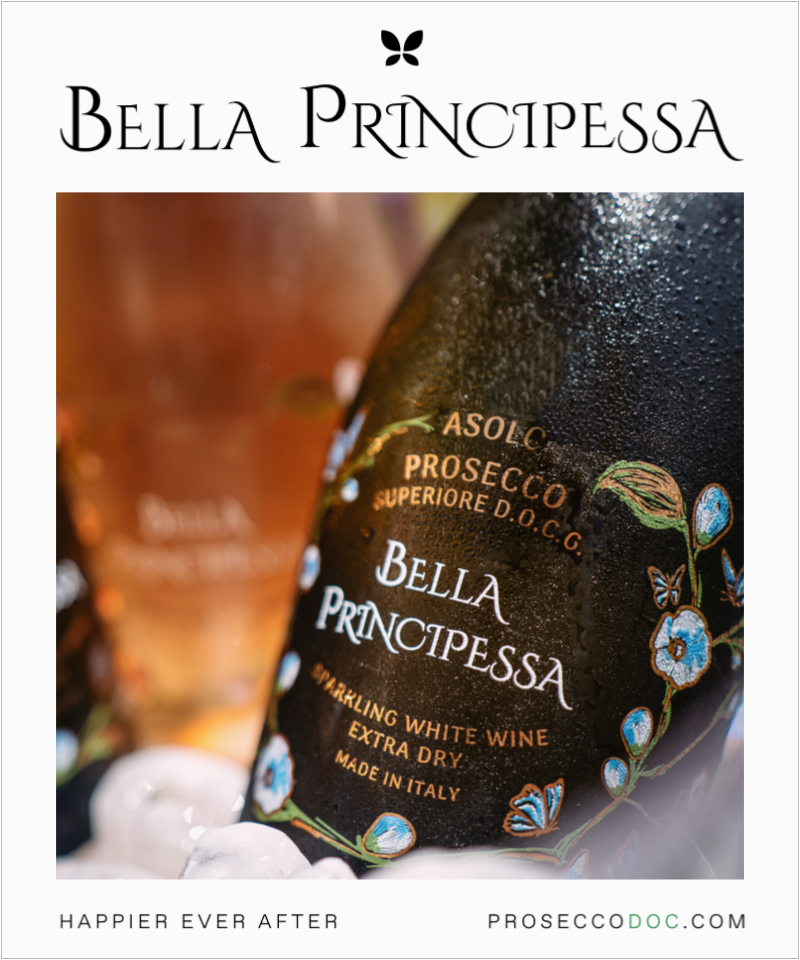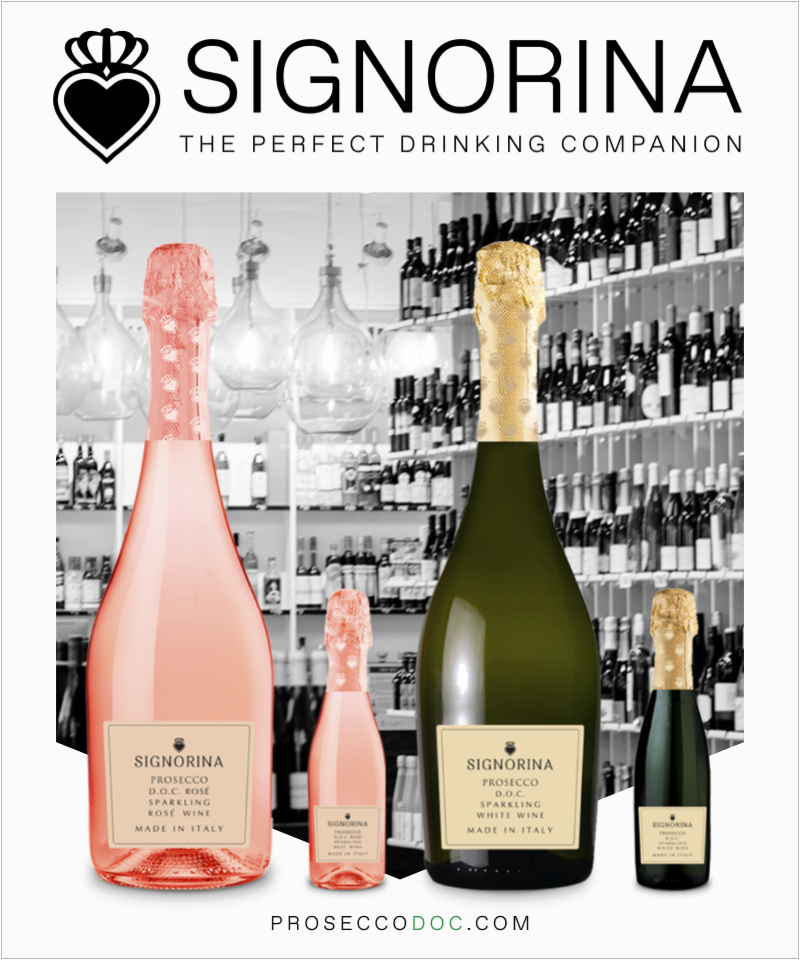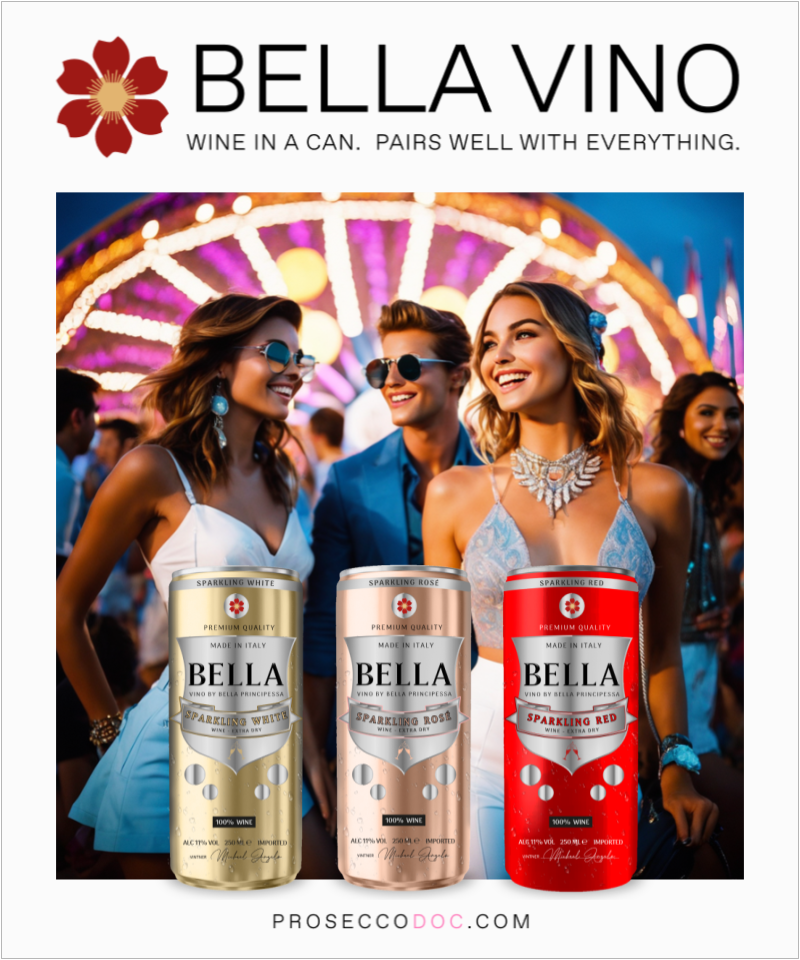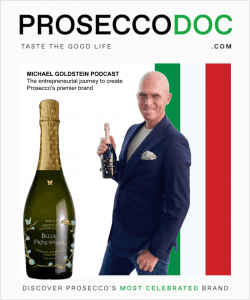Champagne and Prosecco are often compared regarding taste, production methods, regions, grapes, varieties, and brands. But what sets these two drinks apart? This article explores the nuances between these two popular drinks by comparing their history, production regions, grapes, production methods, taste, varieties, price points, and brands.
In particular, we will examine whether Prosecco is suitable for immediate consumption, what distinguishes between prosecco wines and Champagne varieties, and what food pairings are recommended for each drink. Moreover, we will delve into the influences of regional specifics on different aspects of Prosecco champagne, including cost and flavor profiles.
By the end of this article, readers will have a thorough understanding of the nuances between Prosecco and Champagne.
Short Summary
- Champagne and Prosecco have distinct histories, production methods, and grapes used, making them suitable for various occasions and pairings.
- Champagne is a renowned sparkling wine from France with higher acidity and an intricate production process. At the same time, Prosecco is an Italian sparkling wine made with Glera grapes and produced by the Charmat method.
- The price of Prosecco is generally more affordable than Champagne, and both are traditionally paired with salty, rich, and slightly spicy foods.
History
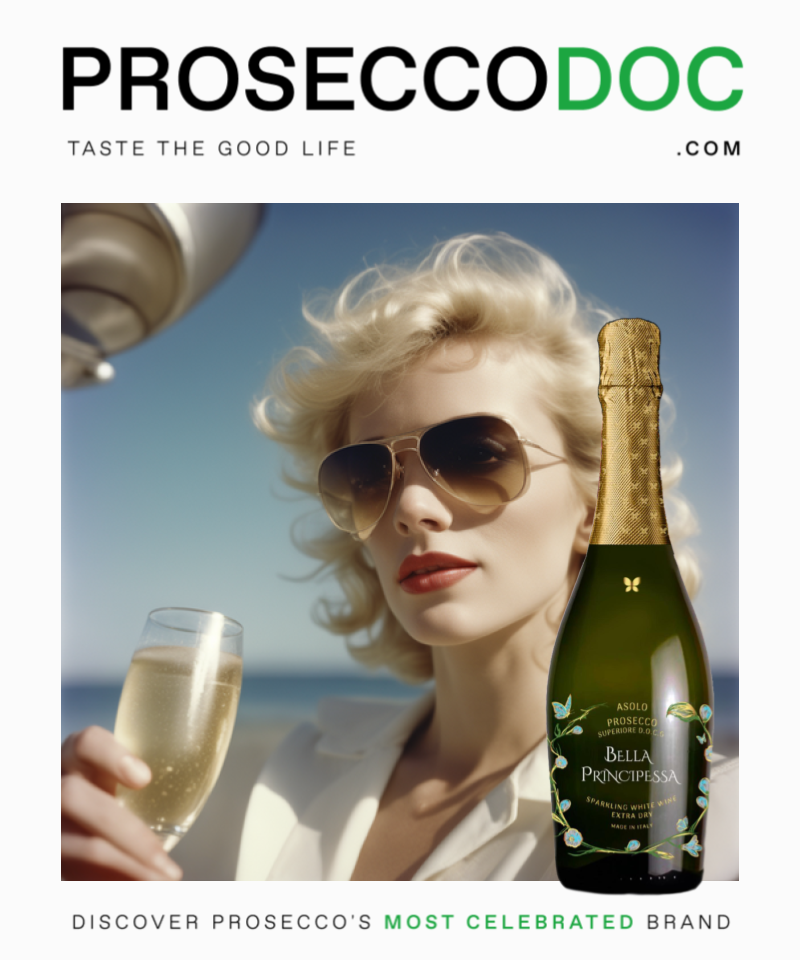
It is believed that Champagne was created accidentally due to cold temperatures causing more carbon dioxide. At the same time, Prosecco has a long-standing history and originated in the Conegliano Valdobbiadene region of Italy. The primary distinctions between Champagne and Prosecco are the region, production method, and the types of grapes used. Comprehending the distinctions between them can assist in selecting the appropriate beverage for a special occasion, determining appropriate culinary combinations, and comprehending why certain bottles cost more.
The production of wine in Champagne began in the 17th century, and it is reported that Dom Pierre Pérignon was spurred to develop sparkling wines upon witnessing the success of Blanquette de Limoux, two sparkling wines made in the Languedoc region of southern France. Champagne is renowned for its complexity and age-ability, while Prosecco is recognized for its affordability and fruity flavor profile.
Champagne
Champagne is a unique sparkling wine made in France’s Champagne region. This renowned beverage has been known since the Middle Ages and continues to be celebrated worldwide. The climate disparities between the Champagne and Prosecco regions are notable; Champagne originates from a significantly more northerly climate than Prosecco. Grapes cultivated in Champagne are renowned for their higher acidity. This leads to them maturing at a faster rate than other varieties. The presence of increased carbon dioxide, as a result of the second fermentation process, is responsible for the bubbly characteristic of Champagne.
Champagne is the ideal sparkling wine for a more intricate and sophisticated experience or if you intend to store a bottle for future consumption. The production of Champagne requires a lengthy and meticulous process. Initially, the grapes used to produce vintage champagne are picked and sorted. The wine then undergoes a primary fermentation process in a large stainless steel tank with the addition of yeast and sugar.
During the second fermentation process of two sparkling wines, carbon dioxide is released as the yeast consumes the sugar, providing the bubbly characteristic of Champagne. The wine is then aged for a period of time before being bottled and ready for consumption.
Prosecco
Prosecco is a type of sparkling wine. It is produced in the Veneto region of Italy, with the vicinity of Treviso being mainly known for it. The Valdobbiadene region in Italy, where Prosecco is produced, has a distinct microclimate that is notably cooler than the surrounding area, which helps to create crisp and delightful sparkling wines. For those seeking a fruit-forward, budget-friendly option to consume in the foreseeable future, Prosecco is an ideal selection. It is suitable for any occasion, perfect for large gatherings, and can even be incorporated into cocktails.
The first production method of Prosecco involves a different production method than Champagne. The tank method is used for Prosecco production, wherein the second fermentation process takes place in a large stainless steel tank. During the second fermentation process, carbon dioxide is released as the yeast consumes the sugar, providing the bubbly characteristic of Prosecco. The Glera grape variety is primarily used in producing Prosecco, along with other varieties such as Pinot Gris, Pinot Noir, and Chardonnay. Compared to Champagne, Prosecco is a much less complex and delicate drink that is best enjoyed fresh.
Production Regions

Champagne is produced in the Champagne region of France, while Prosecco is produced in the northeastern region of Italy, where Glera grapes are cultivated. The production and packaging of Champagne and best prosecco is subject to numerous regulations, specifically seven grapes approved for use must be cultivated within an AOC (appellation d’origine contrôlée) region in France.
For Prosecco, at least 85% of the grapes grown must be Glera, with the remaining 15% comprising other allowable grape varieties. The production region affects the cost of Champagne and Prosecco due to market demand and positioning.
Champagne is more expensive than Prosecco as it requires more time and resources. As such, many champagnes come from vintage batches, requiring more work and thus increasing the cost. On the other hand, Prosecco is produced in larger stainless steel tanks, allowing for more efficient production and a lower price point.
Champagne
Champagne is a sparkling wine required to be manufactured in the Champagne region of France. It is divided into five distinct sub-regions: Montagne de Reims, Marne Valley, Côte des Blancs, Côte de Sézanne, and Côte des Bar.
It is important to note that certain brands cannot be designated as Champagne due to not being technically genuine Champagne, as they were produced outside of the Champagne region.
The production process for Champagne is lengthy and complex, requiring a secondary fermentation that takes place inside each bottle and can take 3 to 5 years to complete.
Prosecco
Prosecco is a sparkling wine from the Veneto and Friuli Venezia Giulia regions of northeastern Italy. To be officially labeled as Prosecco, the bottle must be sourced from the Prosecco region of Italy. The production process for Prosecco is much simpler than that of Champagne, as the secondary fermentation takes place in large stainless steel tanks rather than each individual bottle. This allows for a faster and more efficient production process than vintage champagne, resulting in a more affordable price point.
As such, most Prosecco is non-vintage, as opposed to Champagne. Additionally, Australian producers cannot manufacture Prosecco, as they cannot utilize the same grapes and production methods as Prosecco.
Grapes

Champagne relies on Chardonnay, Pinot Noir, or Pinot Meunier grapes, while Prosecco principally utilizes the Glera grape. The grapes employed in Champagne are renowned for their distinct characteristics, with Chardonnay known for its acidity, floral and citrus aromas, and light body.
Pinot Noir grapes used in Champagne are notable for their body, red fruit flavors, and tannins, while Pinot Meunier grapes grown here are characterized by their fruitiness, approachability, and capacity to mature rapidly.
Champagnes made exclusively from Chardonnay grapes are known as Blanc de Blancs.
Champagne
The production of Champagne is generally conducted with chardonnay, Pinot Noir, or Pinot Meunier grapes. It is important to note that champagne grapes are not employed in manufacturing Champagne. Instead, the coloration of the wine is derived from the production process utilized rather than the hue of the grape.
Chardonnay, Pinot Noir, and Pinot Meunier are the three most prevalent grape varieties utilized in Champagne, each noted for their distinct characteristics and contribution to the flavor profile.
Prosecco
Prosecco is a sparkling wine from Italy, with Glera being its primary grape variety. The production of Prosecco is conducted by utilizing the Charmat method, wherein the second fermentation transpires in stainless steel tanks.
The three principal varieties of Prosecco are Prosecco DOC, Prosecco Superiore DOCG, and Prosecco Rosé DOC.
Prosecco best suits light and fresh dishes, including seafood, salads, and fruit-based desserts.
Production Methods

The Champagne production process, also known as the traditional or Champagne method, produces world-renowned sparkling wine. It involves combining sugar and yeast, in a process known as liqueur de tirage, with the base (then-still) wine, which is then bottled. On the other hand, Prosecco is produced through a process known as the Charmat method, in which the wine undergoes secondary fermentation in a large stainless steel tank.
The Champagne production process begins with aging the base wine in either oak barrels and bottles or stainless steel tanks and bottles. This aging process can take up to three years, depending on the type of Champagne being made. After aging, liqueur de tirage is added to the base wine, and the mixture is bottled. The bottles are then capped and stored horizontally for two to three years.
During this storage period, the wine undergoes a secondary fermentation in the bottle through which carbon dioxide is generated, providing the bubbles that characterize Champagne.
Champagne
Champagne is produced through the traditional method, the méthode champenoise. This involves introducing a combination of sugar and yeast to the still wine, which is then subjected to a secondary fermentation process. This process generates the carbon dioxide that gives Champagne its sparkle. After the second fermentation, the product left in the bottles is known as lees, which are spent yeast cells.
After the secondary fermentation process has been completed, the next step in bottle-making is a process known as disgorgement. This process involves freezing the neck of the bottle, thus causing the dead yeast cells to be released. The liquid lost during the disgorgement process is replaced with still wine, known as a dosage. The bottles must remain on the shelves for at least fifteen months before being sold.
Prosecco Sparkling Wines
Prosecco is a sparkling wine produced from the Glera grape in the Veneto region of Italy. It is manufactured using the Charmat, also known as the tank method. The wine is put through a secondary fermentation process in a pressurized vat to create bubbles.
The Charmat method is a secondary fermentation technique in which yeast and sugars are added to the base wine and then fermented in a large stainless steel tank. This process results in the creation of the bubbles that characterize Prosecco. The process also leaves the yeast behind spent yeast cells, which are then filtered out.
Most Prosecco is non-vintage, a blend of the best prosecco wines from multiple years, although some vintage Prosecco is produced in the conegliano Valdobbiadene region.
Taste: Prosecco vs champagne

Prosecco is more vibrant, whereas Champagne exhibits more intricate flavor profiles, such as toast, baking spice, and cream. The production process of Champagne contributes to its unique flavor profile, which is often described as having mineral and citrus notes, as well as nutty, yeasty, and brioche-like flavors and aromas.
Conversely, Prosecco has a more fruity and bright character, with flavors like apple, melon, and pear. Production methods are instrumental in creating the distinct flavors of each variety, and both techniques, when executed correctly, can yield exceptional wines.
They are most enjoyed from a conventional wine glass, as this allows the full flavor profiles to be enjoyed.
From The Champagne Region
Champagne is a type of sparkling wine produced in France’s Champagne region. Fine Champagne wines are well-known for their distinct flavor. Notes of almond, orange zest, and white cherry contribute to their unique taste.
Fine Champagnes, which often have a vintage date, tend to have aromas that are quite distinct. Examples of these include notes of toast, brioche, or biscuit. Alternative aromas, such as those imparted by the lees, may also be found, giving unusual aromas reminiscent of cheese rind.
Prosecco
Prosecco is a sparkling wine originating from Italy. It is renowned for its vibrant and refreshing taste, its fragrant aromas and flavors such as apple, pear, and yellow peach, and its lighter, effervescent bubbles that do not persist as long.
Most Prosecco is bottled at a young age and is classified as a non-vintage wine, meaning it is composed of blends of base wines from various vintages. Prosecco typically exhibits exuberant fruit and floral aromas, accompanied by lighter, effervescent bubbles that dissipate quickly.
Prosecco’s signature flavors include more fruity notes, aromas, and flavors such as apple, pear, and yellow peach, while Prosecco is bright and refreshing upon tasting.
Varieties
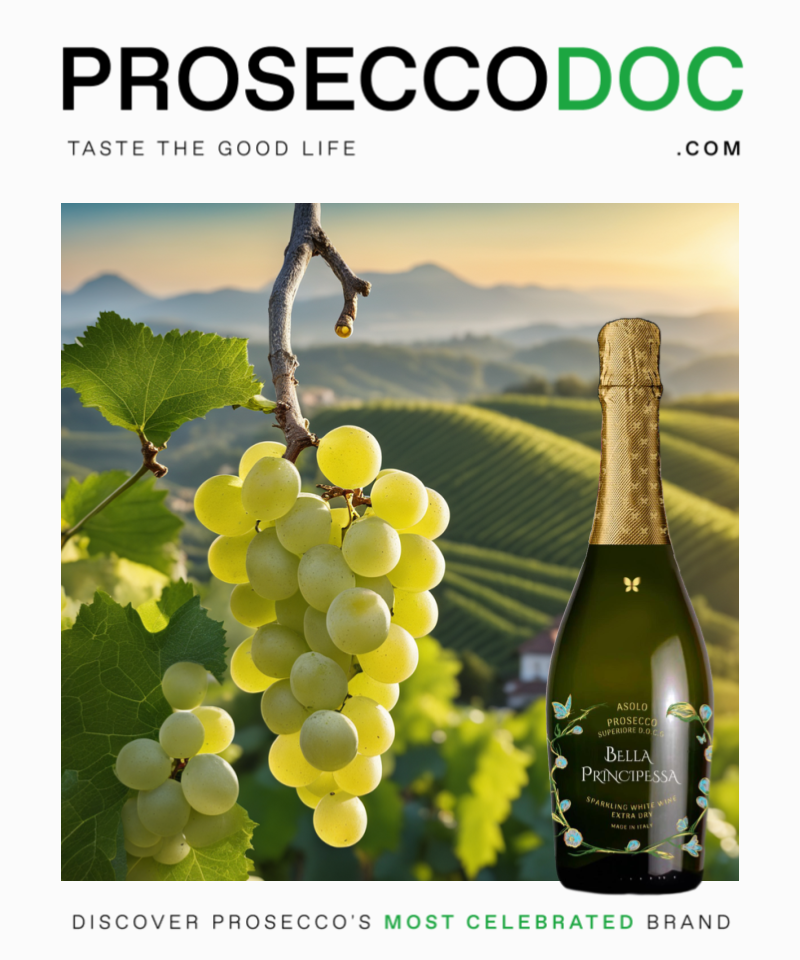
The sweetness levels present in Champagne are Brut, Extra Brut, Brut Nature, Nondosé, Demi-Sec, and Doux. On the other hand, Proseccos are classified according to their region and quality, with the two primary regions for Prosecco production being Conegliano and Valdobbiadene. The DOCG Prosecco is the superior quality option since it is required to meet more stringent criteria.
When talking about Champagne, the sweetness level is an essential factor to consider. The amount of sugar in the bottle determines the dryness of the wine. As mentioned before, there are a variety of Champagne classifications ranging from extra brut to doux that indicate the amount of sugar present in a bottle. Extra brut is the dryest of the styles, containing no more than 6 grams of sugar per liter, while doux is the sweetest, containing over 50 grams of sugar per liter. Additionally, Champagne can be consumed immediately upon its release, and cellaring can also be done to enhance the complexity of its flavors.
In comparison, Prosecco is a sparkling wine produced from the Glera grape in the Veneto and Friuli Venezia Giulia regions of Italy. It is subjected to a secondary fermentation process in stainless steel tanks, resulting in its signature bubbles. The DOC category encompasses a wider production area, while the DOCG is a more limited, superior production area. Prosecco Superiore is a geographic designation denoting that the wine was produced with specific techniques and in an area renowned for its Glera grapes.
Champagne
Champagne is available in various styles, from brut nature or zero dosage, bone-dry, to demi-sec, sweet. The various classifications of Champagne include extra brut, brut nature, nondosé, brut, sec, demi-sec, and doux. As mentioned, “brut” indicates dryness and is usually found in most Champagnes. Additionally, immediate consumption and cellaring are suitable for Champagne upon its release.
When tasting Champagne, the principal distinction between varieties is sweetness. Generally, the majority of the common Champagnes tend to be on the dry side, although there are sparkling wines that can be moderately sweet to sweet. The dosage determines the sweetness level and the amount of sugar added to the bottle before corking. Common Champagnes, such as brut nature or extra brut, is bone-dry, while demi-sec is moderately sweet. The various Champagne classifications listed above indicate the amount of sugar in the bottle.
Prosecco
Prosecco is a sparkling wine from the Glera grape in Italy’s Veneto and Friuli Venezia Giulia regions. The wine is subjected to a secondary fermentation process in stainless steel tanks, resulting in its signature bubbles. Types of Prosecco can be classified according to the production area and quality and can be either DOC or DOCG. The DOCG Prosecco is the superior quality option since it is required to meet more stringent criteria.
The DOCG category of Prosecco is further divided into DOCG Superior and DOCG Rive. Prosecco Superiore is a geographic designation denoting that the wine was produced with specific techniques and in an area renowned for its Glera grapes. DOCG Prosecco is produced in Italy’s Conegliano and Valdobbiadene regions and is made from superior-quality Glera grapes.
The DOCG category of Prosecco is further divided into DOCG Superior and DOCG Rive. DOCG Superior Prosecco has a higher alcohol content and a more intense flavor profile. DOCG Rive is characterized by a lower alcohol content and a more delicate flavor profile.
Price
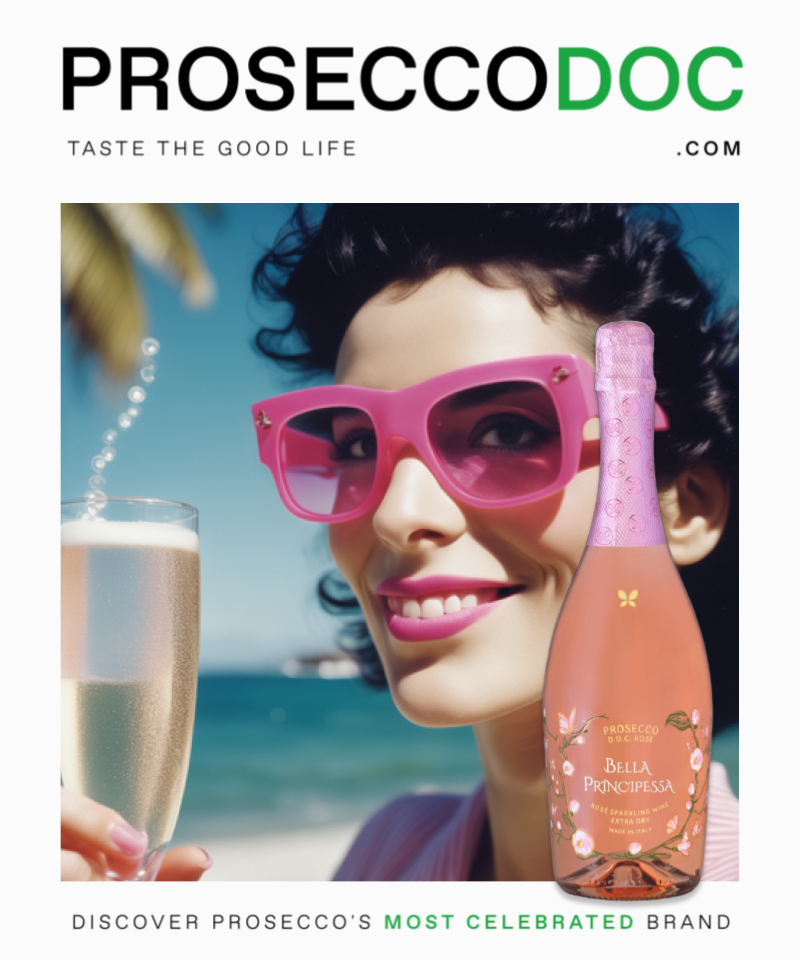
Prosecco is generally more economical than Champagne, with prices for a bottle of Champagne beginning at approximately $50 and a bottle of Prosecco commencing as low as $12. This price discrepancy is due to the production process for Prosecco being less complex than that of Champagne.
The higher cost of Champagne than Prosecco is due to the more intricate production processes employed in its manufacture. However, some Proseccos can be expensive due to their unique production methods.
Brands
Mot & Chandon, Veuve Clicquot, Krug, Dom Pérignon, Bollinger, and Tattinger are some of the most widely acclaimed Champagne brands. These names are known for their exquisite quality and renowned taste. Prosecco brands are the most well-known: Bella Principessa, Signorina, La Marca, Mionetto, and Cinzano.
But there are also other options. Producers have been refining their techniques to produce sparkling wines using Charmant and other methods, and winemakers in California have been creating exquisite sparkling wines in modern styles, according to Prosecco Venture’s Michael Goldstein.
Popular terms associated with sparkling wines include sparkling wine, bubbly, and sparkling, all referring to wines produced in various price points and popular styles.
Food Pairings
Champagne is best complemented with food with a high salinity level, such as Castelvetrano olives or oysters. At the same time, Prosecco is best accompanied by rich, slightly spicy food like green curry.
Traditional food pairings for Champagne include oysters, caviar, and fried chicken. The beverage can also complement heavier dishes such as meat and poultry. Almonds and cashews are suitable nut options to accompany Champagne.
Prosecco is generally well-suited for rich, slightly spicy dishes such as green curry. It is also compatible with cured meats, seafood, fruits, and savory cheeses. Cured meats, fruit-driven appetizers, and Asian cuisine are all suitable accompaniments for Prosecco.
Champagne
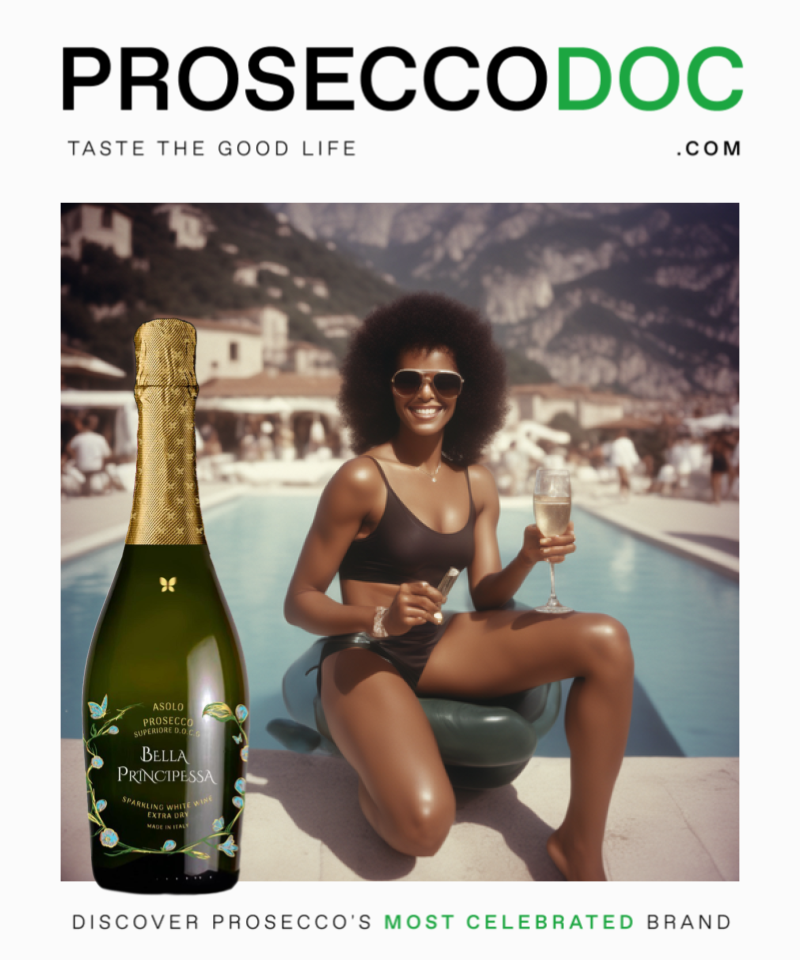
Champagne is a type of sparkling wine. It originates from the Champagne region of France. It is renowned for its tart, acidic flavor, with hints of green apple, citrus, and toast.
Food pairings recommended for Champagne include oysters, caviar, fried chicken, and heavier dishes such as steak and poultry. Almonds and cashews can make excellent nut options to accompany Champagne.
Prosecco
Prosecco is a sparkling wine from Italy. It is made with the Glera grape. It is generally characterized as light-bodied, refreshing, and possessing flavors of green apple, honeydew melon, white peach, and pear.
The optimal food pairings for Prosecco include cured meats, seafood, fruits, and savory cheeses. Prosciutto-wrapped melon, cured meats, and Asian cuisine are particularly suitable accompaniments for Prosecco.
Summary
Comparing Prosecco and Champagne has yielded a range of remarkable findings. Champagne is an established sparkling wine crafted in France’s Champagne region since the 1600s using a unique production process, resulting in sparkling wines with a higher acidity level than Prosecco. On the other hand, Prosecco is a sparkling wine produced in Veneto, Italy, that offers a light body and whimsical flavor profile for any occasion at an affordable price point.
Regarding production regions, Champagne is renowned for its meticulous production requirements, while Prosecco is more straightforward, making it a less expensive and time-consuming option. As far as grapes used, Chardonnay, Pinot Noir, and Pinot Meunier are most commonly used in Champagne, while Prosecco primarily relies on Glera varieties. Produced through dissimilar methods- Champagne with secondary fermentation and Prosecco through the Charmat method – each yields distinctive tastes. Prosecco carries sweet mellow notes of apple, honeydew melon, and pear, while the more tart flavors of green apple, citrus, and toast are characteristic of Champagne.
Although both sparkling wines are charged with effervescent joy, Champagne offers indulgence for sophisticated palates, while Prosecco brings lightheartedness to an evening. Brands such as Mot & Chandon, Veuve Clicquot, Krug, Dom Pérignon, Bollinger, and Tattinger offer exquisite Champagne quality, while well-known Prosecco brands include La Marca, Mionetto, and Cinzano. The best food pairings will depend on which style was sipped, with oysters and caviar for Champagne, cured meats, seafood, and savory cheeses for Prosecco.
In conclusion, each sparkling wine maintains distinct features and creates unique experiences that can be precisely what a person is looking for. Whether opting for the endlessly classy and timeless flair of Champagne or the bubbles and bright flavors of Prosecco, each will establish a celebratory atmosphere and leave all smiling for more.
Frequently Asked Questions
Is Prosecco a Champagne?
No, Prosecco is not a Champagne. It is a sparkling wine from the Veneto region in Italy, whereas Champagne is a sparkling wine produced exclusively in the Champagne region of France.
The production methods and grape varieties used to make these two wines vary considerably.
Is Prosecco just cheap Champagne?
No, Prosecco is not just a cheap Champagne. While it shares some similarities in flavor and production methods, the tank method used to make Prosecco makes it much cheaper than traditional methods used to produce Champagne.
These cost-saving differences are what make Prosecco a more affordable alternative to Champagne.
Is Prosecco Champagne sweet or dry?
Prosecco is a dry sparkling wine with fruity aromas and flavors that give the impression of sweetness. While some Proseccos contain a slightly sweeter taste, most are dry in style.
Therefore, Prosecco is typically characterized as dry.
What is so special about Prosecco?
Prosecco is renowned for its sweet character and refreshing taste. Its delicate and fruity fragrances and light and crisp flavor make it a delicious and enjoyable beverage.
Whether served as an aperitif or accompanied by food, Prosecco’s unmistakable taste always adds depth to any occasion.
What prosecco?
Prosecco is a sparkling white wine originating from Venice, Italy. Its light, fruity flavors have become increasingly popular as an aperitif and celebration drink.
Whether served as a crisp spritzer or a sparkling cocktail, Prosecco is the perfect addition to any gathering.







